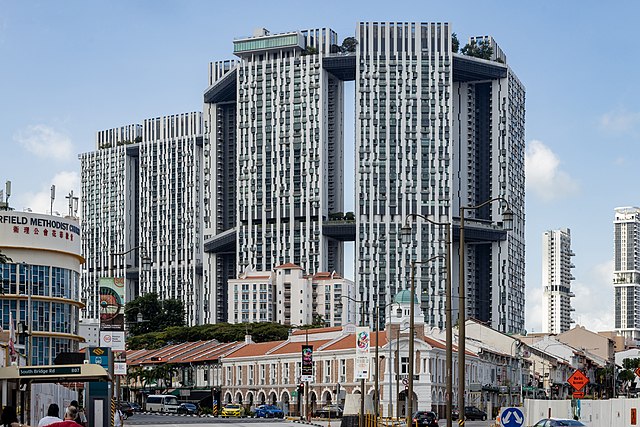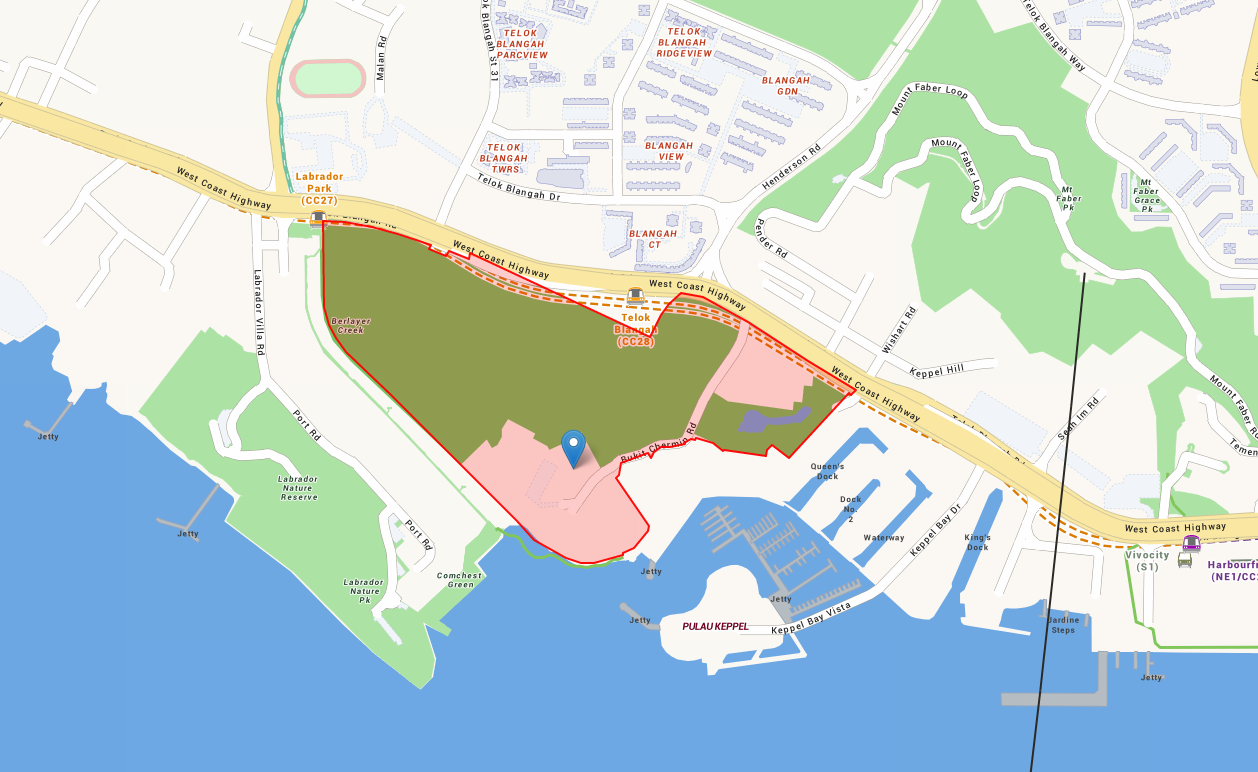Applications for the May 2022 BTO launch have just ended and we’re now looking forward to the August 2022 BTO launches. But before we look at the upcoming BTO flats, there’s something we want to talk about: the May 2022 BTO flats that fell under the Prime Location Public Housing (PLH) model and their lower-than-expected application rates.
In the May 2022 BTO exercise, the 1,669-unit Bukit Merah (Bukit Merah Ridge) and 867-unit Queenstown (Ghim Moh Ascent) Prime Location Public Housing flats saw modest demand.
Bukit Merah Ridge received about 6,665 applications, which works out to an overall application rate of 1.6 for 3-room flats and 5.4 for 4-room flats. Meanwhile, Ghim Moh Ascent received 2,892 applications, equivalent to an overall BTO application rate of 1.5 for 3-room flats and 4.4 for 4-room flats.
This was a surprise, as previous PLH projects in Rochor and Kallang/Whampoa did well. River Peaks I and II from the November 2021 Central Area (Rochor) BTO launch enjoyed an overall BTO application rate of 3.1 and 10.3 for 3-room and 4-room flats, respectively; King George’s Heights from the February 2022 Kallang/Whampoa BTO launch saw an overall BTO application rate of 6.4 and 17.5 for 3-room and 4-room flats, respectively.
Here are a few possible reasons why the May 2022 Bukit Merah and Queenstown launches did not do so well, in spite of their highly desirable locations.
1. Long BTO Completion Time of 60 months for Prime Location Public Housing Flats

The latest batches of BTO flats will undergo a longer completion period than pre-pandemic BTO projects. The waiting time is now as long as 60 months – that is, five whole years. Previously, BTO flats were completed in about three to four years, with some projects being completed in as little as two and a half years.
The low BTO application rates could be a strong indicator that young couples are no longer willing to wait out long BTO completion times, no matter how highly desirable the location.
The COVID-19 pandemic has disrupted the lives of many Singaporeans. Though BTO construction delays persisted, it didn’t stop the aspirations of homeownership and marriage for those who came of age in the last two years.
Many are increasingly eager to begin their ‘adult lives’, craving space and independence from their parents. In the PropertyGuru Singapore Property Market Report Q2 2022, we’ve observed dwindling supply and increasing HDB resale prices and soaring rental demand.
Those who were affected by BTO construction delays rented in the interim, while other young families who had pressing housing needs or were unwilling to wait turned to the HDB resale market.
This narrative has persisted for more than a year as BTO construction delays endure. Hence, for the young who are happily coupled up and have their finances secured, they may prefer to buy a flat ASAP and ‘move on’ with their lives, on their own timeline.
So while five years is not a long time in the grand scheme of things, the low take-up rate, especially for first-timer applicants, reflects the mood that young Singaporeans are unwilling to wait too long for a home.
2. Prime Location Public Housing Prices Are High, Especially for 4-room Flats

The Bukit Merah Ridge 3-room and 4-room flats commanded starting prices of $377,000 and $540,000 respectively. As for Ghim Moh Ascent, 3-room and 4-room flats cost from $369,000 to $511,000 respectively. We did the math and calculated how much you would need to pay if you bought one of these flats by using the lowest starting price estimates.
Do note that depending on your chosen unit, the amount you pay will differ. These prices exclude CPF housing grants and assume the loan tenure is 25 years. The HDB loan calculations are based on an interest rate of 2.6% and an LTV of 85%. Meanwhile, the bank loan calculations are based on an interest rate of 1.6% and an LTV of 75%.
Budgeting for a Queenstown May 2022 BTO Flat
3-room
$369,000
$55,350 downpayment; estimated $1,423 monthly mortgage repayments
$92,250 downpayment; estimated $1,120 monthly mortgage repayments
4-room
$511,000
$76,650 downpayment; estimated $1,971 monthly mortgage repayments
$127,750 downpayment; estimated $1,551 monthly mortgage repayments
Budgeting for a Bukit Merah May 2022 BTO Flat
3-room
$377,000
$56,550 downpayment; estimated $1,454 monthly mortgage repayments
$94,250 downpayment; estimated $1,145 monthly mortgage repayments
4-room
$540,000
$81,000 downpayment; estimated $2,082 monthly mortgage repayments
$135,000 downpayment; estimated $1,639 monthly mortgage repayments
Although the Prime Location Public Housing model was designed to make flats in central locations more affordable, these prices are still very high, especially for young couples just starting out in their careers.
In addition, couples who intend to have kids are likely to opt for 4-room rather than 3-room flats in anticipation of growing their families. If they were to buy a flat at Bukit Merah Ridge or Ghim Moh Ascent, they would be looking at spending more than half a million dollars, not inclusive of Buyer’s Stamp Duty (BSD) and other relevant taxes.
Affordability is not solely linked to price. Some buyers may be able to afford to buy these flats, but doing so would cause them to be financially stretched every month, or wipe out their CPF savings.
These buyers may have decided against applying for the PLH flats, as they would not put themselves in a financially precarious position. With fears of a looming recession, perhaps it’s a wise move to err on the safe side.
What Happens To Your Mortgage If You Lose Your Job?
Read more here.
3. Prime Location Public Housing (PLH) Measures Are Working
While the PLH model is designed to make it easier for households to afford flats in central locations through more generous subsidies, but also has the effect of curtailing its investment potential through measures like a longer Minimum Occupation Period (MOP) of 10 years and not being able to rent out the entire unit even after the MOP has been fulfilled.
The PLH model certainly seems to be putting off prospective buyers hoping to flip a property and become overnight millionaires. This is not necessarily a bad thing, as one of the goals of the PLH is to mitigate the ‘lottery effect‘ of centrally-located HDB flats.
However, it appears that young couples may be finding the PLH measures to be too restrictive. The longer MOP and inability to rent out the entire unit effectively binds the couple to their flat for a long period of time. Many couples might not want to be locked down to their flat for so long in case they decide to upgrade their home or move overseas.
Notably, many of those trying their luck for the recent PLH BTO projects were second-timers. Here are the PLH BTO application rates for 3-room and bigger flats (non-elderly applicants):
3-room
0.6
21.1
1.6
4-room
3.2
45.9
5.4
3-room
0.5
21.9
1.5
4-room
3.0
31.3
4.4
These buyers might be looking to swap their existing flats for one in a more attractive location and are likely to be looking for a home in which they can live for a long time.
4. Increasing Demand for City Fringe Living
Regardless of the demand for BTO flats under the PLH model, demand for city fringe living, in general, remains high. Even before the pandemic, many turned to HDB towns on the city fringe for a home that offered excellent connectivity to the CBD at a more affordable price.
With the implementation of the PLH model, the demand for city fringe accommodation may spill over to city fringe flats not affected by the restrictive measures.
Already, we are seeing this occur in the past few BTO exercises. The Feb 2022 Geylang HDB BTO launch, Dakota Crest, saw an overall BTO application rate of 10.4 and 28.8 for its 3-room and 4-room BTO flats, respectively.
Neighbouring HDB flats in mature estates not affected by the PLH might also see their prices being driven skywards, increasing the chances of more million-dollar resale flat transactions.

In relation to the growing demand for HDB flats on the city fringe, Dr. Tan Tee Khoon, Country Manager, PropertyGuru Singapore explains:
“New HDB flats in the city centre remain scarce as the area is substantially built-up to serve other additional uses such as office and retail. Any pockets of BTO flats released in the city centre also tend to be pricier as compared elsewhere.
As such, the city fringe (which includes Geylang, Kallang/Whampoa and Marine Parade in the east, Outram and Bukit Merah in the south, Queenstown and Bukit Timah in the west and Bishan, Toa Payoh in the north), is the next best alternative for HDB flat applicants, being a conurbation that extends from the city centre."
Interestingly, in the May 2022 BTO exercise, Yishun Beacon had an overall BTO application rate of 12.2 and 15.0 for its 4-room and 5-room flats, respectively. Subsequently, the flats in the non-mature estate proved to be the most popular launch of the exercise.
While nowhere near the city centre, the demand for the Yishun flats might have been boosted by the fact that two out of the five BTO locations in that launch were PLH flats.
Applying For a Prime Location Public Housing BTO Flat
Knowing the current response to PLH flats, it will be interesting to see how buyers respond to upcoming projects in the Greater Southern Waterfront area.

Due to the highly central location and redevelopment of the area, these homes might have higher investment potential in the eyes of prospective buyers. The HDB has already announced the upcoming construction of 6,000 flats on the current site of Keppel Club and intends to launch them within the next three years.
Will the flats prove popular? Will they even fall under the Prime Location Public Housing model? Only time will tell. In the meantime, all eyes are on the upcoming BTO exercise in August which will see a PLH launch in Bukit Merah.
For more property news, content and resources, check out PropertyGuru’s guides section.
Looking for a new home? Head to PropertyGuru to browse the top properties for sale in Singapore.
This article was written by Joanne Poh. A former real estate lawyer, she writes about property and personal finance and spends her free time compulsively learning languages and roller skating in carparks.
Disclaimer: The information is provided for general information only. PropertyGuru Pte Ltd makes no representations or warranties in relation to the information, including but not limited to any representation or warranty as to the fitness for any particular purpose of the information to the fullest extent permitted by law. While every effort has been made to ensure that the information provided in this article is accurate, reliable, and complete as of the time of writing, the information provided in this article should not be relied upon to make any financial, investment, real estate or legal decisions. Additionally, the information should not substitute advice from a trained professional who can take into account your personal facts and circumstances, and we accept no liability if you use the information to form decisions.





